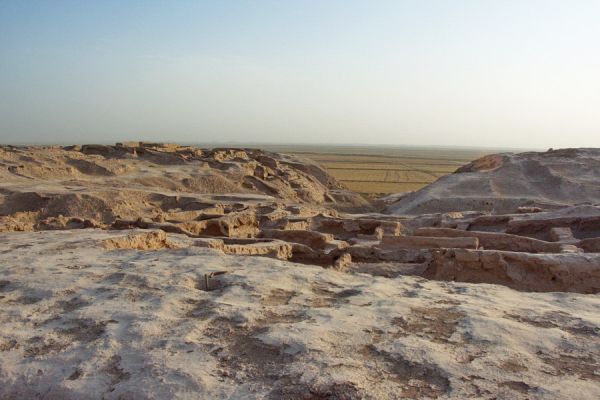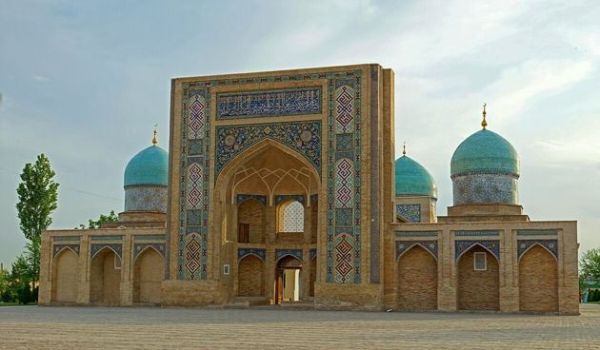Kampyrtepa Fortress
Kampyrtepa is one of the oldest archaeological sites in Uzbekistan. These are the ruins of a port city on the Amu Darya River (in ancient times Oks), founded at the end of the IV century BC and existed until the beginning of the I century AD. The settlement of Kampyrtepa is located 30 km away. northwest of Termez, on the right bank of the Amu Darya River. The settlement was founded to serve the Burdaguy ferry and served as a hotel and customs office. There was a transit point for merchants following the route of the Great Silk Road, where they could rest, ship their goods, pray to the gods and set off on their way.
In 2019, academician Edward Rtveladze, after several decades of excavation and analysis of written sources, convincingly stated that the settlement of Kampyrtepa is the mysterious Alexandria of Oxiana, a port city founded by Alexander the Great on the Amu Darya. The city was mentioned in the chronicles, but its location remained a mystery for hundreds of years.
The Kampyrtepe complex consists of a main citadel surrounded by a moat, a "lower town" surrounded by a fortress wall with towers, and an undefended suburb. Archaeologists have found well-preserved cultural layers of the Early Hellenistic, Greco-Bactrian and Kushan-Yuezhian eras here. Numerous finds, as well as architectural features of the settlement, indicate that various cults and religions have peacefully coexisted in Kampyrtepe for centuries. Zoroastrians, Buddhists and worshippers of ancient Greek gods, as well as followers of local cults, got along here.
The city reached its peak during the reign of Kanishka I (the first third of the second century A.D.). During this era, the most favorable conditions were created for the development of international trade and culture. The most numerous archaeological finds relate specifically to the Kushan period. This is how a Buddhist sanctuary was found, built on the outside of the fortress wall of the settlement, as a tribute to the Greco-Bactrian tradition. At the same time, the architecture of the sanctuary is Zoroastrian and represents a cell with a bypass corridor. At its base, a terracotta figurine of a seated Buddha was found, which simultaneously embodies the features of Buddha and Ahura Mazda, the deities of the prevailing religions of Zoroastrianism and Buddhism at that time.
Coins from various eras and ancient Bactrian papyri have also been found. Interestingly, during the reign of Kanishka I, in addition to the Buddha, deities of more than 30 different religions were depicted on coins, which is another confirmation of the atmosphere of tolerance and religious tolerance that prevailed in that era, which was originally embedded in the philosophy of Buddhism.
Kampyrtepa is one of the iconic monuments of the Surkhandarya oasis.














